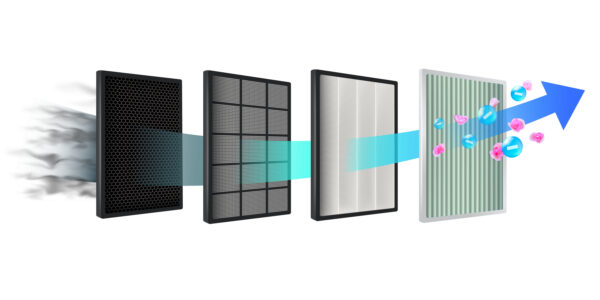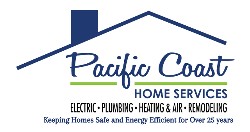HEPA Filters – Cleaner, Safer Indoor Air
If you’ve been shopping for air purification and filtration products, it’s highly likely that you have run across mentions of HEPA filters. You may be wondering just what a HEPA filter is and how it works. Wonder no more! Below we have provided answers to all of your questions!
What is a HEPA Filter
 The acronym HEPA stands for “high efficiency particulate air”, therefore, a HEPA filter is a high efficiency particulate air filter. Basically, a HEPA filter is a type of filter that stops or captures air particles down to a very tiny size at a very effective rate. HEPA filters are 99.97% effective in capturing particles as small as 0.3 microns. A HEPA filter also helps to eliminate other toxins, like brominated fire-retardant chemicals and allergens such as pollen, pet dander, and dust. HEPA filtration is a popular form of air purification technology that needs to be understood in order to make an informed buying decision.
The acronym HEPA stands for “high efficiency particulate air”, therefore, a HEPA filter is a high efficiency particulate air filter. Basically, a HEPA filter is a type of filter that stops or captures air particles down to a very tiny size at a very effective rate. HEPA filters are 99.97% effective in capturing particles as small as 0.3 microns. A HEPA filter also helps to eliminate other toxins, like brominated fire-retardant chemicals and allergens such as pollen, pet dander, and dust. HEPA filtration is a popular form of air purification technology that needs to be understood in order to make an informed buying decision.
What really sets HEPA filters apart from other filters, is that their claims are more than just claims. In order to even be called a true HEPA filter, it has to first be tested and approved. In order to carry the HEPA name, a filter must trap 99.97% of particulates 0.3 microns or larger. This does not mean that the filter cannot trap particles smaller than 0.3 microns, because many HEPA filters can; it is simply requirement for approval.
Schedule Service Today!
Pacific Coast Home Services is your friendly, local home contractor taking care of all of your HVAC, Plumbing, Electricial and Remodeling Needs. Call for fastest service or visit our Contact Us page.
How Does a HEPA Filter Work?
A big difference between HEPA filters and other filters is the filter media. HEPA filters are made of thin fibers of glass and have a small level of activated carbon material. The fibers form a thick, pleated, paper-like material. There are three ways in which HEPA filters trap pollutants:
- Particles make contact with the filter material and stick.
- Particles that come closer than one diameter of the filter’s fiber are pulled back to the fiber and stick
- Particles crash into other stuck molecules and get caught in the fiber
Put more simply, for every 10,000 particles that make contact with a HEPA filter, only 3 tiny ones will be able to pass through. The more times the air circulates through the filter in an hour, the cleaner the room.
HEPA Filters vs. Standard Filters: Indoor Air Quality
HEPA filter have even more benefits and effectiveness than standard air filters, offering your home the indoor air quality you and your family deserve.
HEPA filters are capable of trapping much smaller particles
Like standard air filters, a HEPA filter works like a sieve, trapping the contaminant on one side and preventing it from lingering inside the air you actually breathe. The first layer of a HEPA filter stops the large particles. Once past the “sieve” layer, a HEPA filter subjects smaller particles to more layers of filtration.
Small contaminants, such as dust particles, hit a barrier of very dense fiberglass. The fibers are dense enough to trap extremely small particles, as small as 0.3 microns in diameter! For comparison purposes, a human hair is typically 40 to 50 microns in diameter.
HEPA filters trap these particles 3 different ways:
- Trapping: The particles collide with the fibers, unable to pass through them.
- Snagging: Smaller particles are caught in the fibers before passing through.
- Diffusing: Some particles float around within the filter in near-perpetual motion, unable to go through to the other side.
What this all boils down to is: the air that passes through a HEPA filter is free from nasty dust particles that activate your allergies, make you sick, or cause you to be uncomfortable.
HEPA filters are much more dense than standard filters
To really understand how aggressively a HEPA filter traps and eliminates airborne contaminants, consider how much denser it is in comparison to a standard air filter. Were you to take apart and investigate a HEPA filter, you would discover 210 linear feet of filtration material. Whereas, a standard air filter would be just 2 feet long.
HEPA Filters Help Relieve Allergy and Asthma Symptoms
Do you suffer from allergies even inside your own home? There’s nothing worse than being unable to breathe due to a stuffy nose or itchy, watery eyes that drive you nuts. Indoor air quality is extremely important for allergy and asthma sufferers. A HEPA filter is an excellent solution for allergy and asthma symptoms and is known to help improve the overall health in your home.
HEPA Filters Against Bacteria and Mold Spores
A concern in any environment is eliminating bacteria and mold spores from surfaces, especially those in which cleanliness is imperative, like hospitals or clinics, or even closer to home – the kitchen and bathroom. HEPA filters allow you to filter mold spores and bacteria from the air in addition to sensitive surfaces in these areas.
Do I Need a HEPA Filter?
People with breathing difficulties triggered by indoor or outdoor allergens will find relief when using HEPA filters. Even if no one in your household has allergies or asthma, those that also greatly benefit from HEPA filters are:
- New parents– A HEPA air filter will eliminate contaminants from the air making it safer for young children (and adults) to breathe.
- Pet owners of pets with hair
- Regular or occasional smokers, and those that live with them
- Residents in a high pollen area
- Homeowners with wall-to-wall carpeting
- Those with a lot of foot traffic going in and out of the home
- Headache sufferers
- Those with chronic breathing problems brought on by lung cancer, emphysema, or other pulmonary issues
Regardless of your situation, HEPA is a valuable item to add to your toolkit for indoor air quality solutions.
Contact Pacific Coast Home Services for a HEPA filter installation in your San Jose home today!
How Can We Help You Today?
REQUEST SERVICE ONLINE
Contact Us

